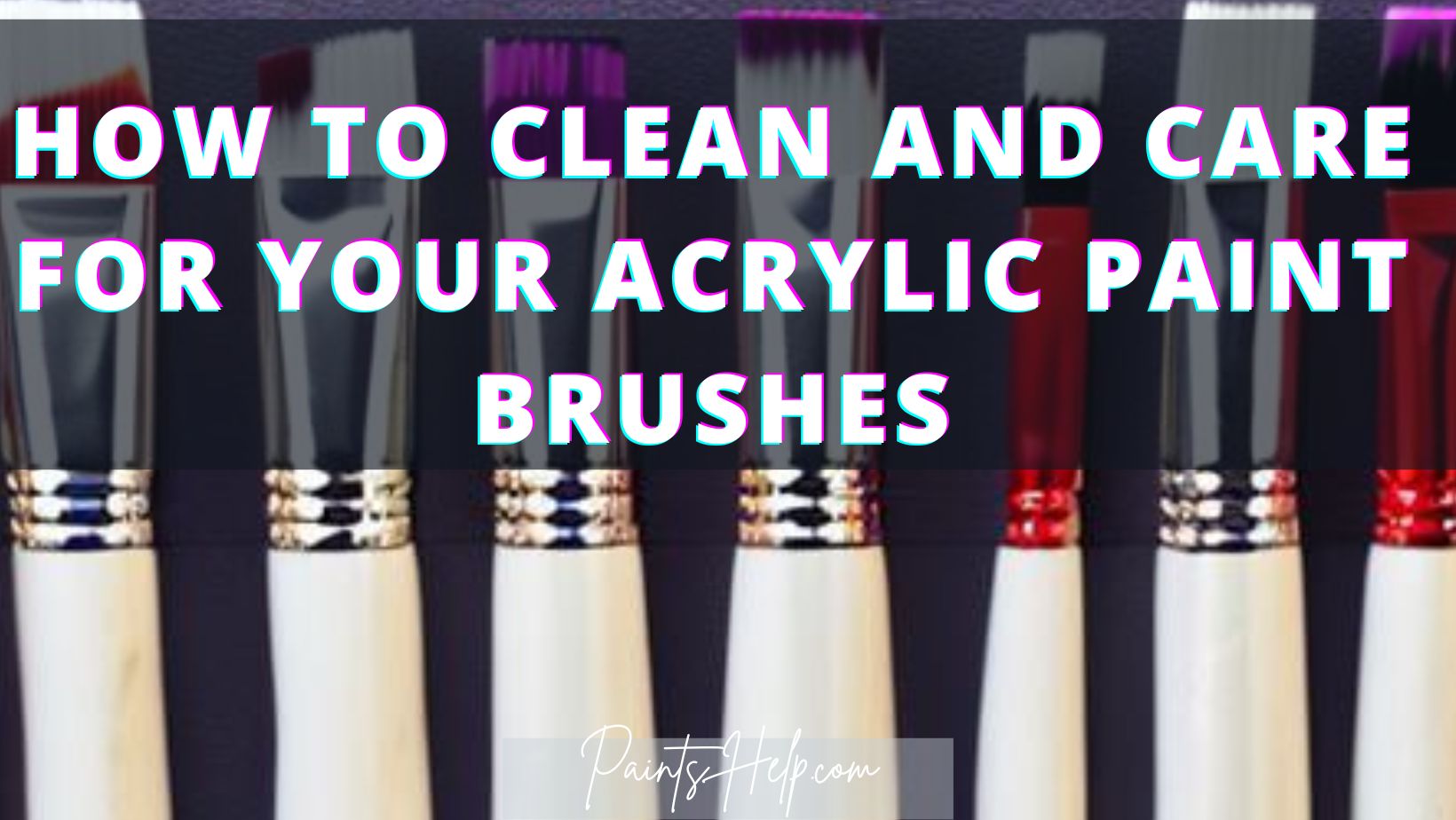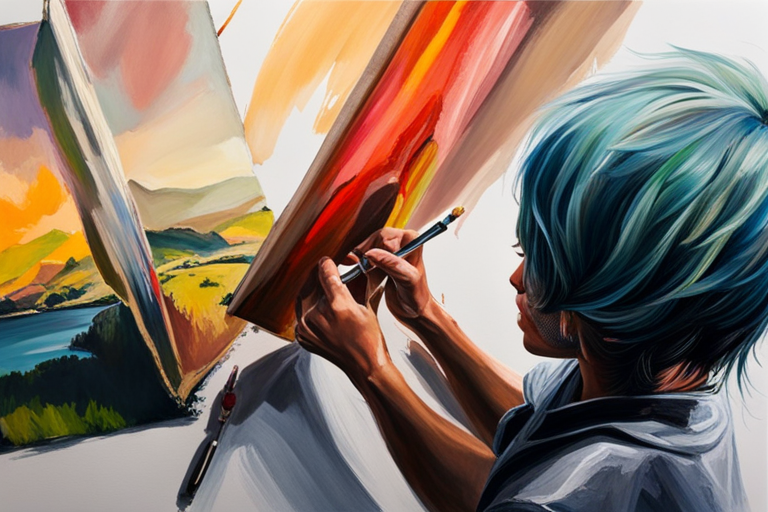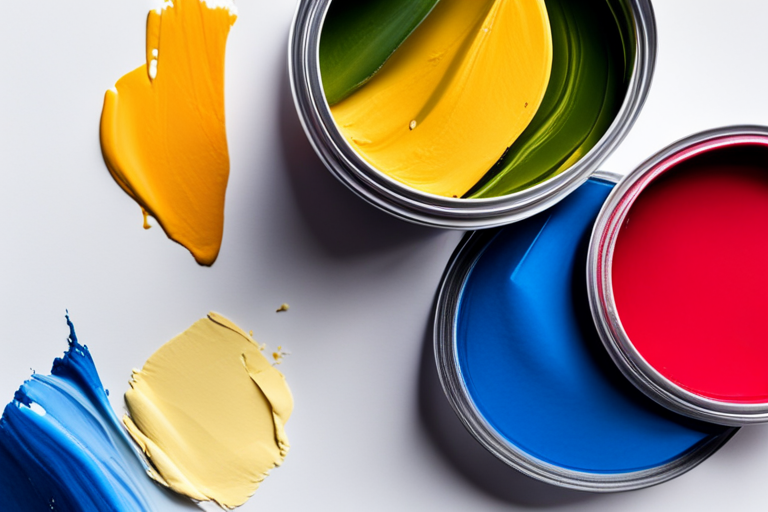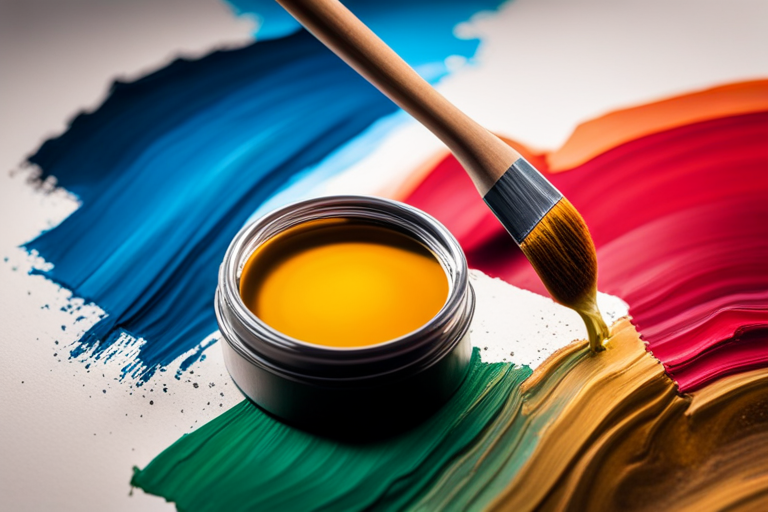Acrylic paints are an incredibly versatile medium that can be used to create a wide variety of artistic styles and techniques. However, as any artist knows, taking care of your tools is crucial to maintaining their quality and longevity. This is especially true when it comes to your acrylic paint brushes, which can harden and become unusable if not cleaned and cared for properly.
That’s why learning how to clean and care for your acrylic paint brushes is essential for any artist working with this medium. In this blog post, we will explore the best practices for caring for and maintaining your brushes, from rinsing them with warm water after use to using the right cleaning solutions and drying methods.
Whether you’re a seasoned artist or just starting out with acrylics, this guide will help you keep your brushes in excellent condition so that you can continue to create beautiful works of art for years to come. By following these simple steps, you can ensure that your tools remain in excellent condition, helping you to get the most out of your acrylic paints and advancing your artistic abilities.
Rinse your acrylic paint brushes with warm water immediately after use
One of the biggest challenges that most painters face while working with acrylics is how to maintain the quality of their brushes. Paint brushes are an investment, and with proper care and maintenance, it’s possible to extend their lifespan and ensure quality work for years to come.
One important step in this maintenance is rinsing your acrylic paint brushes with warm water immediately after use to remove excess paint. This step might seem simple, but it can make a significant difference in the longevity of your brushes.
Here are some tips and tricks to follow for rinsing your acrylic paint brushes with warm water:
Step 1: Hold the brush under a warm tap. It’s essential to use warm water to rinse the brushes, as it helps to dissolve the paint while not causing damage to the bristles.
Step 2: Swirl the brush in the water. As you hold the brush under the water, gently move it back and forth, allowing the warm water to wash away any remaining paint.
Step 3: Repeat until the water runs clear. Continue swirling the brush in the water until you see the water run clear. This ensures that all paint residues are removed and prevents the build-up of paint in the bristles.
Step 4: Squeeze out excess water. Gently squeeze the bristles of the brush to remove any excess water, being careful not to damage the shape of the brush in the process.
Step 5: Reshape the brush. After squeezing out the excess water, reshape the brush with your fingers to restore its natural shape, and lay it flat to dry.
It’s crucial to rinse your acrylic paint brushes with warm water after every use to ensure that they are maintained and cared for properly. By following these simple tips and tricks, you can protect your investment and ensure top-quality work every time you use them.
Use a mild soap and water solution

Cleaning your makeup brushes is an essential part of your beauty routine, but it can often be overlooked or neglected. Dirty brushes can cause a range of skin problems from breakouts to infections, so it’s important to clean them regularly. Using a mild soap and water solution is an easy and effective way to get your brushes squeaky clean.
Here are some key tips to keep in mind when cleaning your makeup brushes:
1. Choose the right soap: Opt for a gentle, non-toxic soap that won’t damage the bristles of your brushes. Baby shampoo, Castile soap, or a specifically formulated brush cleaner are all good options.
2. Don’t soak your brushes: Avoid leaving your brushes in the soap and water solution for too long as this can damage the bristles. Instead, dip them in the solution and swirl them around, then rinse thoroughly.
3. Be gentle: Don’t scrub your brushes too hard as this can cause the bristles to break or become misshapen. Instead, use gentle circular motions to agitate the soap and water and work the dirt out of the bristles.
4. Dry your brushes properly: After cleaning, take care to properly dry your brushes. Lay them flat on a clean towel or hang them upside down to prevent water from sitting in the ferrule (the metal part of the brush) as this can loosen the glue that holds the bristles in place.
Not only will cleaning your brushes help maintain their performance, but it will also ensure that you’re not transferring bacteria and other harmful substances onto your skin. Make it a habit to regularly clean your brushes and your skin will thank you for it!
Dry your brushes with a clean towel, gently squeezing out any excess water
One of the essential aspects of painting is keeping your brushes clean and well-maintained. Artists understand that a quality brush is critical to achieving the perfect stroke and blending of colors, which is why it is essential to take good care of them. A part of maintaining your brushes is to dry them correctly, which helps to remove access water from the bristles, prevent damage, and improve their lifespan.
When it comes to drying your brushes after washing, it is important to handle them with care. The perfect way to dry your brushes is to use a clean towel, ideally, a microfiber or soft cotton material that won’t harm the brush’s bristles. The following list provides more details on this process of drying your brushes with a clean towel:
1. After rinsing your brushes, you need to gently wipe the bristles with a clean towel to remove excess water. Do this by pressing gently and squeezing the bristles. This will help protect the brush from the moisture that can damage the bristles.
2. Use a soft and clean towel to avoid any harsh rubbing or the risk of damaging the brush’s bristles. The towel should also be free from any fibers that could stick to the brush and cause damage.
3. Make sure you are gentle when pressing or squeezing the brush’s bristles so that you don’t damage them. Avoid wiping the brush too hard or twisting the bristles in any way.
4. If you are drying multiple brushes, it’s best to lay them on a flat surface and then drape the towel over them. It will prevent the water from dripping onto the floor and clear any excess water left in the brush.
Drying your brushes with a clean towel is an important part of keeping your art supplies in good condition. It will keep them in excellent condition and ensure that they remain useful for a long time.
By following the simple steps mentioned above, you can safeguard your brushes and keep them in perfect condition for painting in the future.
Conclusion
If you want to extend the lifespan and maintain the quality of acrylic paint brushes, you must take good care of them. With the simple steps outlined above, you can maintain their quality and prolong their lifespan. By rinsing your brushes after use, using a mild soap solution to clean them thoroughly, and drying them with a clean towel, you can ensure that your brushes remain in top condition for your next painting session.
Ultimately, this will save you time and money, as well as help you create better-quality artwork. Remember to take care of your brushes, and they’ll take care of you!




Leave a Reply